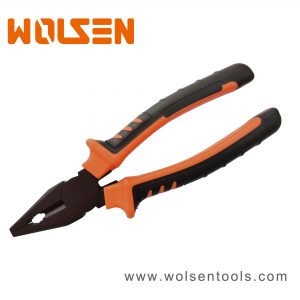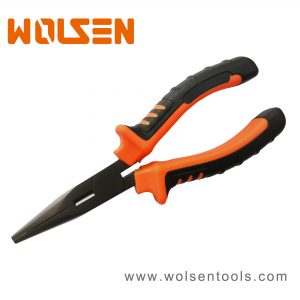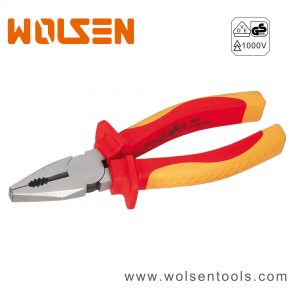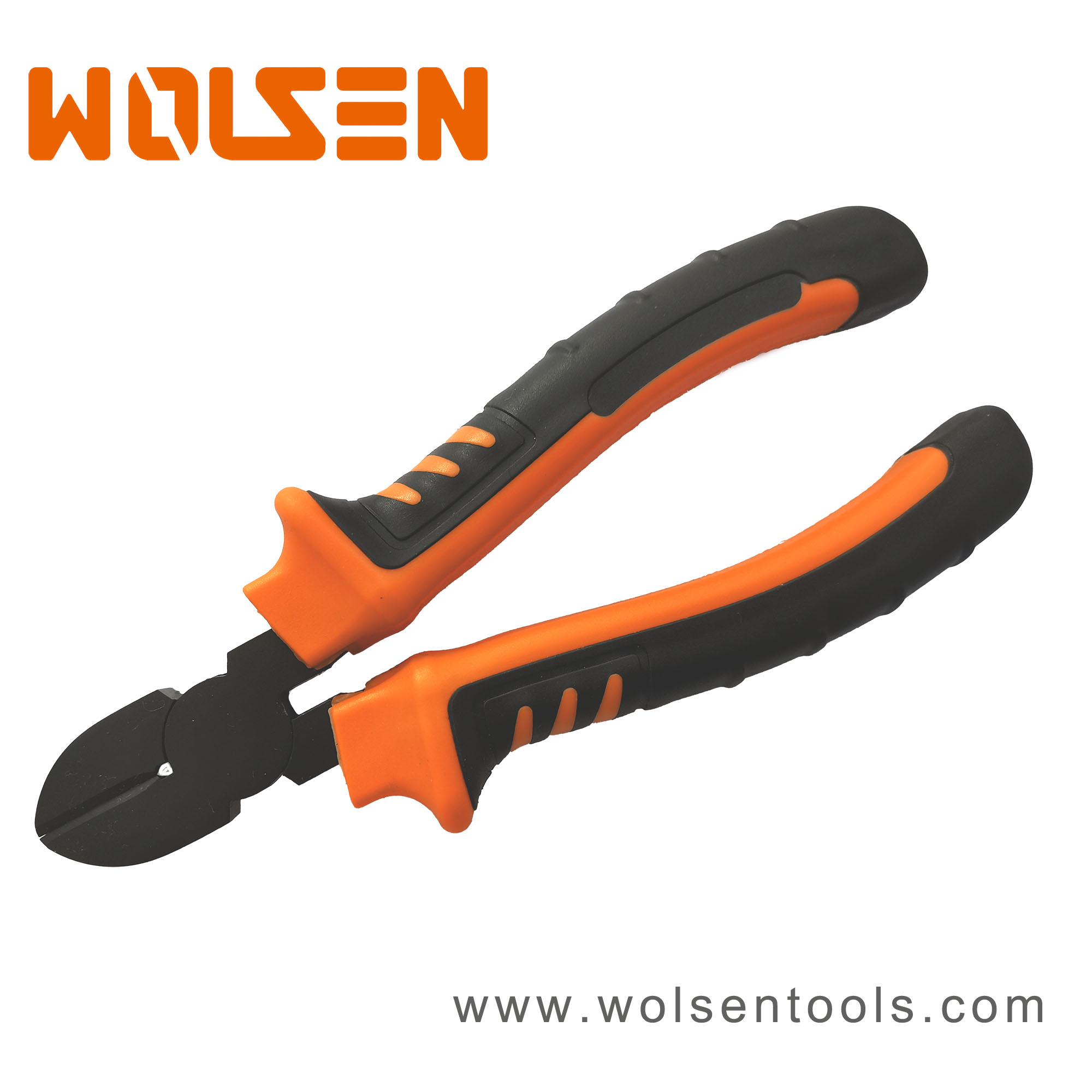
Diagonal Cutting Pliers
Item No.: 10002
Material: Cr-V Steel, Drop Forged
Surface Treatment: Black Nickel Plated
Handles: Bi-color TPR Handles
Packaging: Plastic Hanger
| ITEM NO. | SIZE | QTY./CARTON |
| 100036 | 6″ | 160mm | 60 |
| 100037 | 7″ | 190mm | 60 |
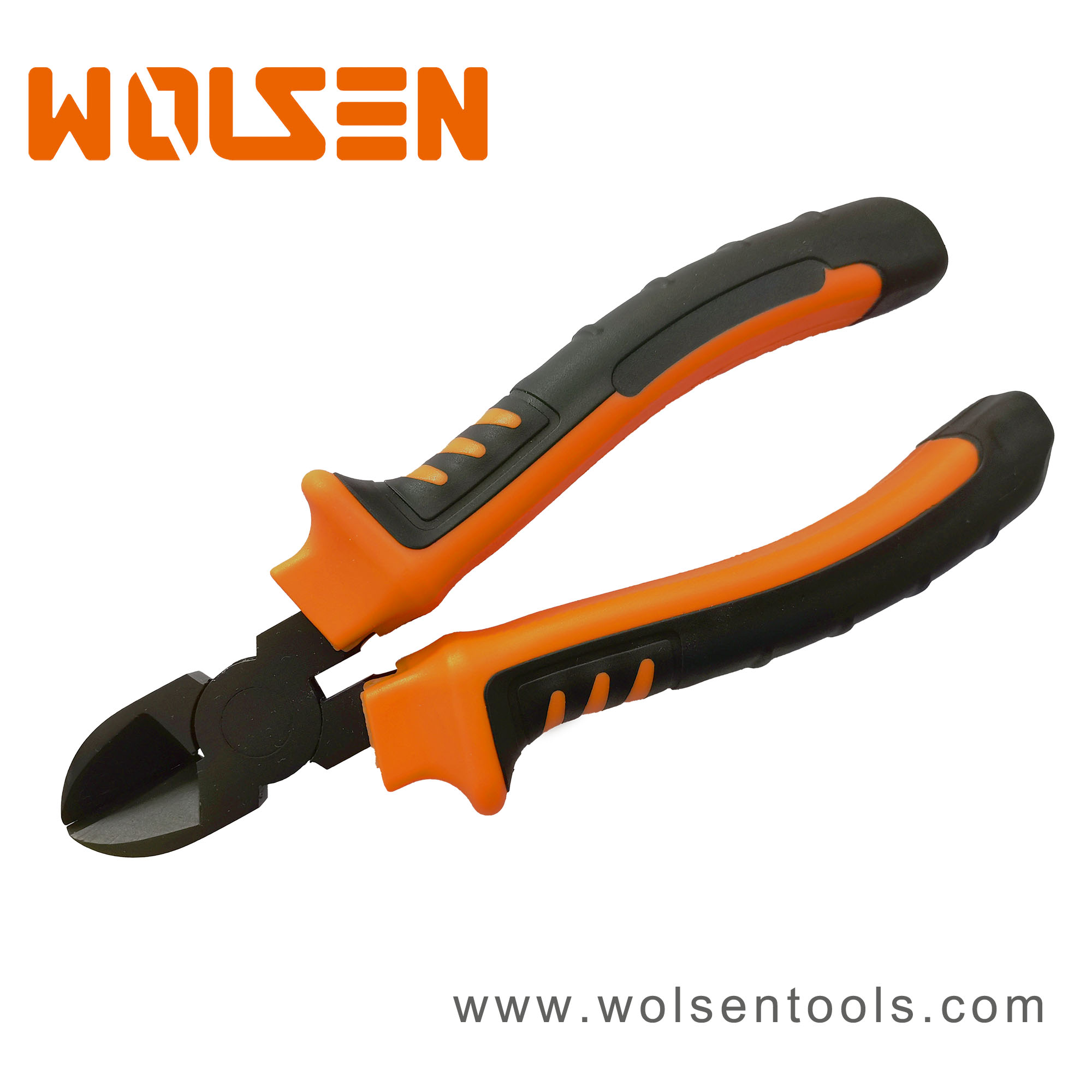

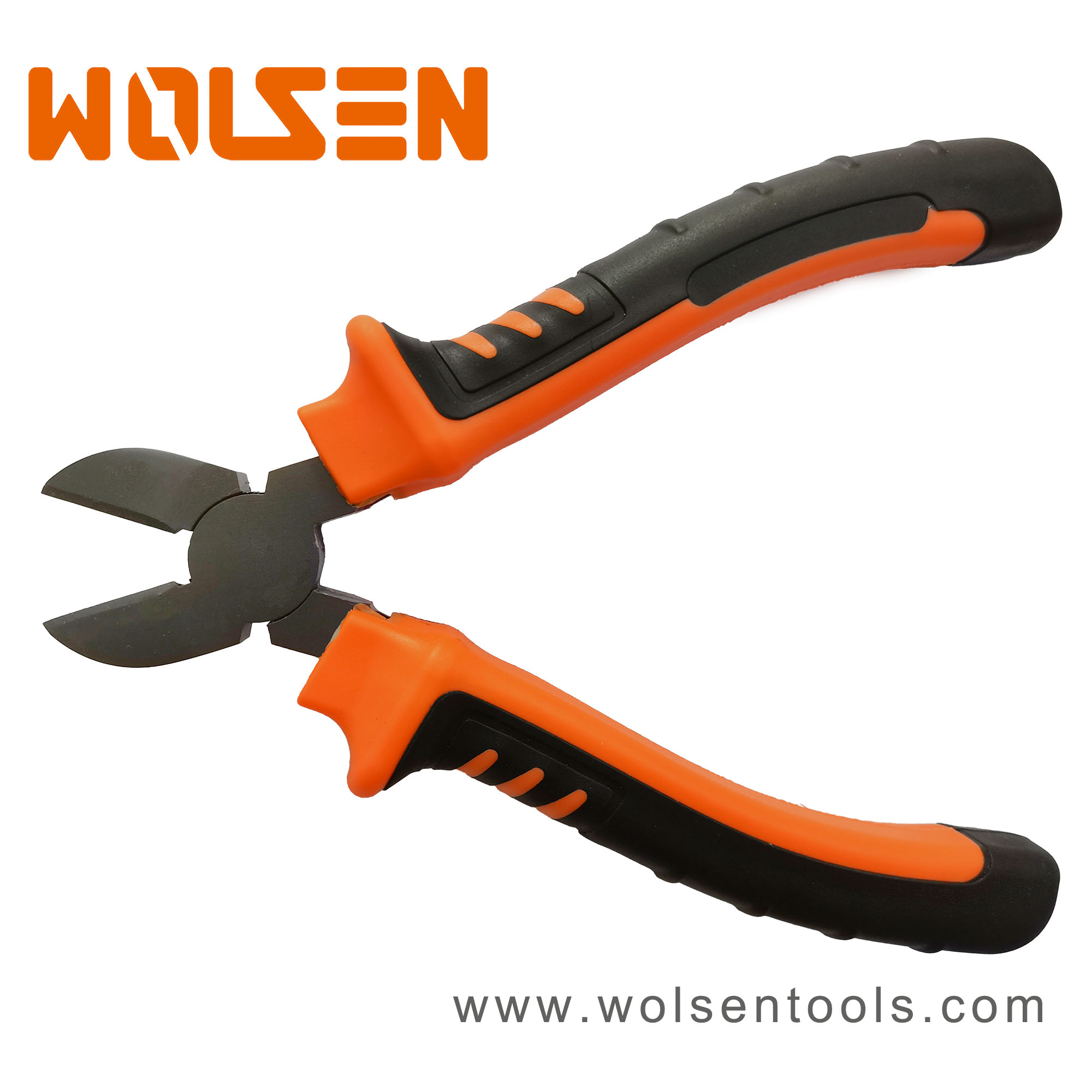
Diagonal cutting pliers (also known as wire cutters, diagonal pliers, diagonal cutters, side cutters, dikes or Nippy cutters) are pliers intended for the cutting of wire (they are generally not used to grab or turn anything). The plane defined by the cutting edges of the jaws intersects the joint rivet at an angle or “on a diagonal”, hence the name.
Action
Instead of using a shearing action as with scissors, diagonal pliers cut by indenting and wedging the wire apart. The jaw edges are ground to a symmetrical “V” shape, thus the two jaws can be visualized to form the letter “X”, as seen end-on when fully occluded. The pliers are made of tempered steel, and inductive heating and quenching are often used to selectively harden the jaws.
Jargon
Diags or dikes is jargon used especially in the US electrical industry, to describe diagonal pliers. “Dike” can also be used as a verb, such as in the idiom “when in doubt, dike it out”.
In the United Kingdom and Ireland, diagonal pliers are commonly referred to as snips or nippers, and in Canada, Australia and New Zealand they are often referred to as side cutters.
Insulation
The handles of diagonal cutting pliers are commonly insulated with a dip-type or shrink fit electrically insulating material for comfort and some protection against electric shock.
Uses
Diagonal pliers are useful for cutting copper, brass, iron, aluminium and steel wire. Lower quality versions are generally not suitable for cutting tempered steel, such as piano wire, as the jaws are not hard enough. Attempting to cut such material will usually cause indentations to be made in the jaws, or a piece to break out of one or both jaws, thus ruining the tool. However higher quality side cutters can cut hardened steel, such as 2 mm piano wire.
Variations
For electronics work, special diagonal cutters that are ground flush to the apex of the cutting edge on one side of the jaws are often used. These flush-cutting pliers allow wires to be trimmed flush or nearly flush to a solder joint, avoiding the sharp tip left by symmetrical diagonal cutters. It is common for this type of diagonal cutter to be referred to by another name, such as “flush cutter” to distinguish it from symmetrical cutters.
For easier cutting of larger gauge wire, a compound-action can be employed to increase the mechanical advantage.
Some pliers for electrical work are fitted with wire-cutter blades either built into the jaws or on the handles just below the pivot.
Other variations are made to create high leverage specifically to cut through hard wire, such as electrical fence wire, dental wire, and piano wire.
How to use diagonal cutting pliers
Open up the handles and so the jaws of diagonal side cutting pliers, cutters, nippers.
Step 1 – Open jaws
Open the jaws of the diagonal cutting pliers by moving the handles apart. The pliers may have a spring that does this for you or you may have to pull them apart yourself.
Place the wire, nail, cable near the pivot or rivet of the diagonal side cutting pliers, cutters, nippers.
Step 2 – Place object between jaw
As a general rule the object you wish to cut should be placed as far down the blades as possible, close to the joint.
Cutting soft copper wire near the tip of the jaws and blades of the diagonal side cutting pliers, nippers, cutters.
Some tools have been designed to cut soft objects (copper and plastics) near the tip of the jaws, see the technical specification for more information on your diagonal cutting pliers.
Squeeze the handles together to squeeze the jaws of the diagonal side cutting pliers, cutters or nippers and push the blades into and through the object.
Step 3 – Squeeze handles together
With the wire firmly in place, squeeze the handles together (you should only need one hand for this). The blades will push through the wire and cut it in two.
Light duty and heavy duty diagonal side cutting pliers, cutters, nippers.
Step 4 – Troubleshooting
If you find you are struggling to cut the wire, check for damage on the blade which could prevent a clean cut and then try moving the wire closer to the joint. If that fails, it is likely you need a stronger pair of diagonal cutting pliers for the job.

